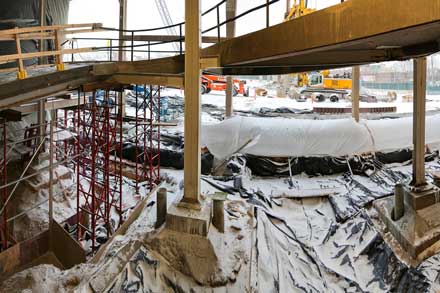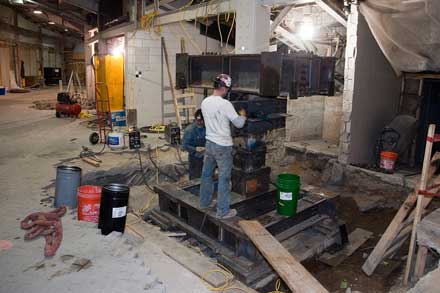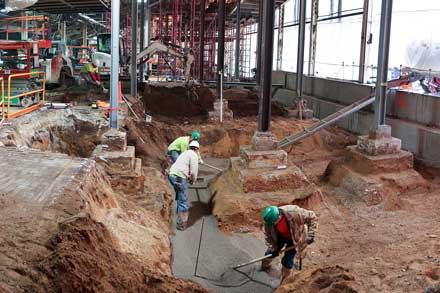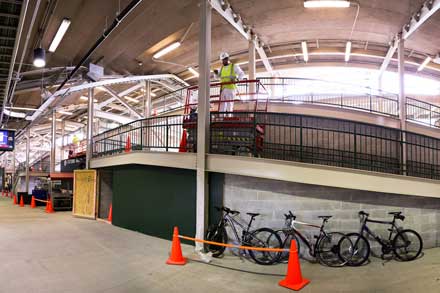Restoring Wrigley Field - The 1060 Project
During Wrigley Field's 100th anniversary year the ambitious 1060 Project began restoring this national treasure, ensuring the traditions enjoyed by millions of fans will continue for generations to come. Though only the first of this multi-phase project has been completed, you'll find some serious engineering behind the charm and game-day experience.
Structural Improvements
In the main concourse, the concrete structures were preserved and the existing superstructure was replaced.

Demolition

Micropiles

Concrete

Staggered Shifts
The Budweiser Bleachers and video boards are supported by more than 880 tons of steel – sourced from four different foundries across the Midwest. That’s the equivalent of 5.4 million baseballs! The structure is a combination system of structural steel columns and girders with cast-in-place risers at 30’ intervals, designed to maintain the historic aspects of the ballpark.

Tomorrow's Prefabrication
The bleachers rest atop 1,426 cubic yards of concrete. Pepper's self-perform team virtually designed and coordinated the concrete work. The formwork for the bleachers was then prefabricated offsite. At the moment concrete was ready to be poured, the forms were delivered to the site. This creative approach kept the project moving.
Project Coordination
Each day was a closely coordinated symphony of personnel, equipment and materials. The site's long, linear configuration and proximity to both the neighborhood and a local fire station required an hourly monitored plan for a myriad of trades, cranes, masonry scaffolding and steel erection activities. Pepper collaborated with a vast team of architects, engineers, subcontractors and trades to establish zones of influence and communication protocols to identify potential pinch points and opportunities to improve efficiencies. At the level of peak activity, the team coordinated the movement of more than 155 tradesmen.
Enhancements to Fan Experience
The bleacher’s footprint has expanded, creating additional seating and group terraces, and reducing fan time away from the action by including new concession options and improving restroom facilities. New high-impact outfield video boards also provide fans with real-time statistics.
Ivy Wall Restoration
The ivy at Wrigley is itself a national treasure, and the brick wall it climbed was in dire need of repair. The ivy was originally adhered into the masonry wall using copper wires. Over time, the organic nature of the ivy deteriorated the integrity of the masonry as well as the wire.
With great care and meticulous attention to detail, the mixture of Boston and Baltic ivy was removed from the Right Field wall.
The ivy was protected in place under a special platform that provided masons access to the wall after it was removed.
Masons meticulously restored the wall, section by section, during severe winter conditions.
A portable enclosure was built to create workable conditions during the brutal 2014-2015 winter. The Commission on Chicago Landmarks approved the work in stages, ensuring the integrity of the structure was maintained.
The original bricks were preserved and integrated into the restored wall, visible from the exterior of the park.
After the wall's restoration was complete, the original 1937 vines were re-attached using rust-resistant materials. Today, the ivy is flourishing and the wall is ready for action.
The 1060 Project
Location: Chicago, Illinois
Owner: Chicago Cubs Baseball Club, LLC
Owner's Rep: ICON Venue Group
Architect: VOA Associates